Within the religion of Progress, infinite growth is assumed by default. The world has been growing and improving since at least the Middle Ages – which by Progress reckoning is far enough into the evil past that it’s not worth thinking about earlier times – and therefore it is safe to assume that growth will continue on indefinitely into the future.
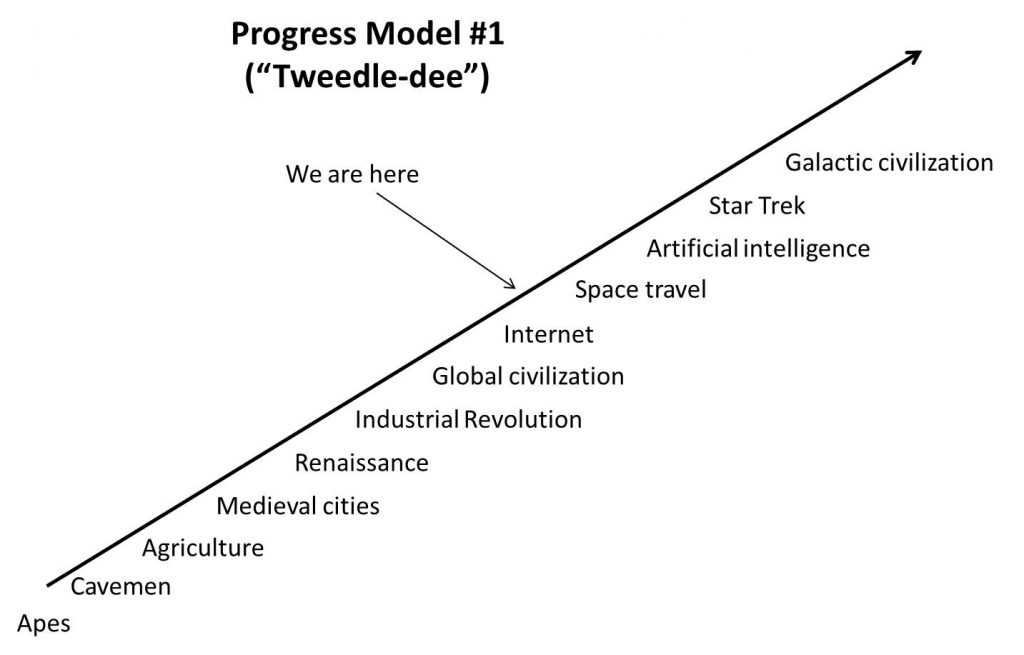
Suggest to a Progress-ite that infinite growth is impossible, or that climate change will wreak havoc with food-growing regions, or that we are running out of oil with no ready replacements, and they will default to this model:
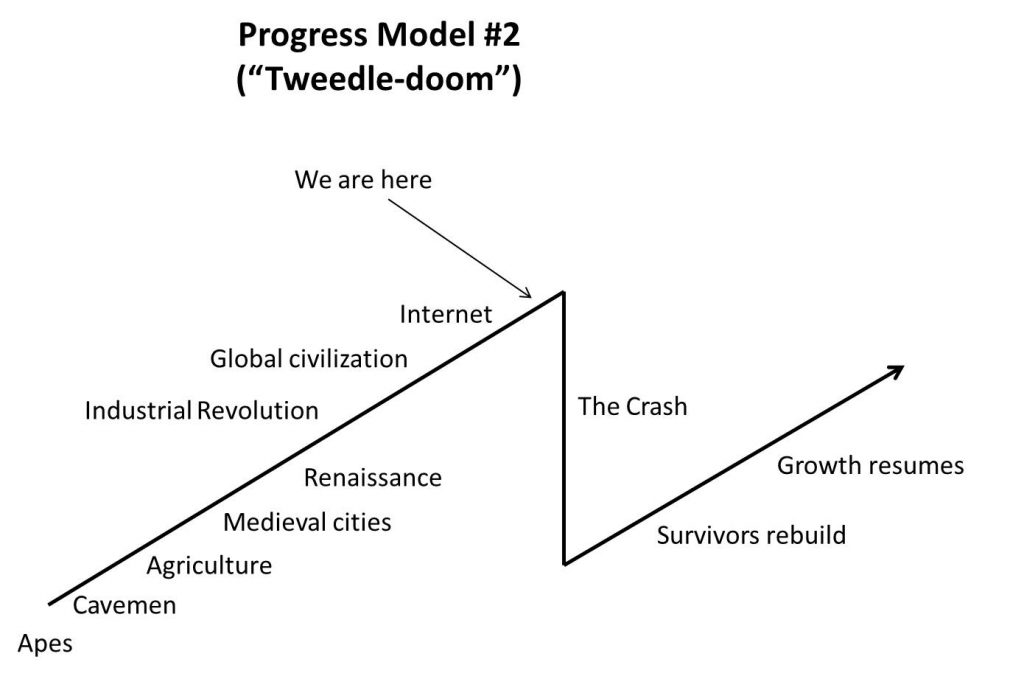
Author and blogger John Michael Greer calls these “tweedle-dee” and “tweedle-doom”. One is relentlessly optimistic, the other is apocalyptic, and both have positive-sloped lines. “Onward and upward,” as they say. Aside from motivating some “prepper” behavior, the crash model doesn’t really demand a different outlook on life, because we never know when the crash will arrive, and we can assume that progress will continue on as before right up until the point at which it occurs.
In reality, we know that infinite growth is impossible on a finite planet, that space travel is unlikely to change that on any reasonable timescale, and furthermore that fast crashes are extremely uncommon. Perhaps the last one to occur on a global scale happened 65 million years ago, when an asteroid impact wiped out the dinosaurs and a great many other species.
In the normal course of events, civilizations do not crash overnight. Instead, they reach a peak, decline, and ultimately give rise to new civilizations. The Roman Empire was not built in a day, but neither did it fall in a day. Over a century passed between the first signs of decline and the sack of Rome, and it would be another 75 years after that before the ruling Roman Emperor was deposed.
This cyclic nature of human civilizations is predicated on resource availability, and any attempt to model the future based on these constraints inevitably yields a peak followed by a decline. The first well-known model, released in 1972 when progress had not yet slowed, was published in a book called The Limits To Growth:
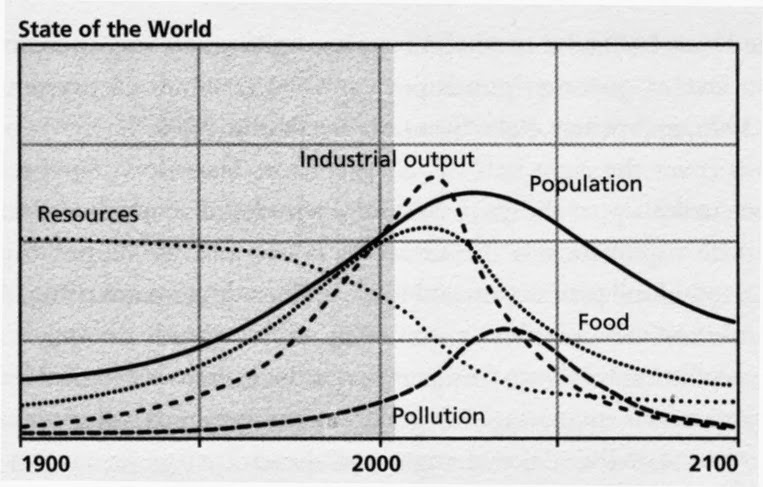
This is, of course, just a model. As my environmental modeling professor used to say, “All models are wrong, some models are useful.” In reality, the peaks are proving to be more prolonged, because “resources” are not simply there until they are gone. Rather, as easily-accessed resources run out, we exploit previously-uneconomical resources like shale oil and lower-grade ores. The advent of fracking did not prove Peak Oil wrong; it just moved the peak onward by 10-15 years. Tar sands may do the same, but at a higher cost which will put a damper on progress even as the peak becomes wider and the early phases of decline are slowed.
We can argue about specifics, but the general conclusions are unavoidable. We have drilled and burned all of the easy oil. We have mined all of the easy ores. Nearly all of the world’s arable land is in agricultural use. Any additional gains will be incremental, and depletion never sleeps. Thus the age of progress has come to its inevitable end, and we just happen to be alive at the beginning of an age of decline.
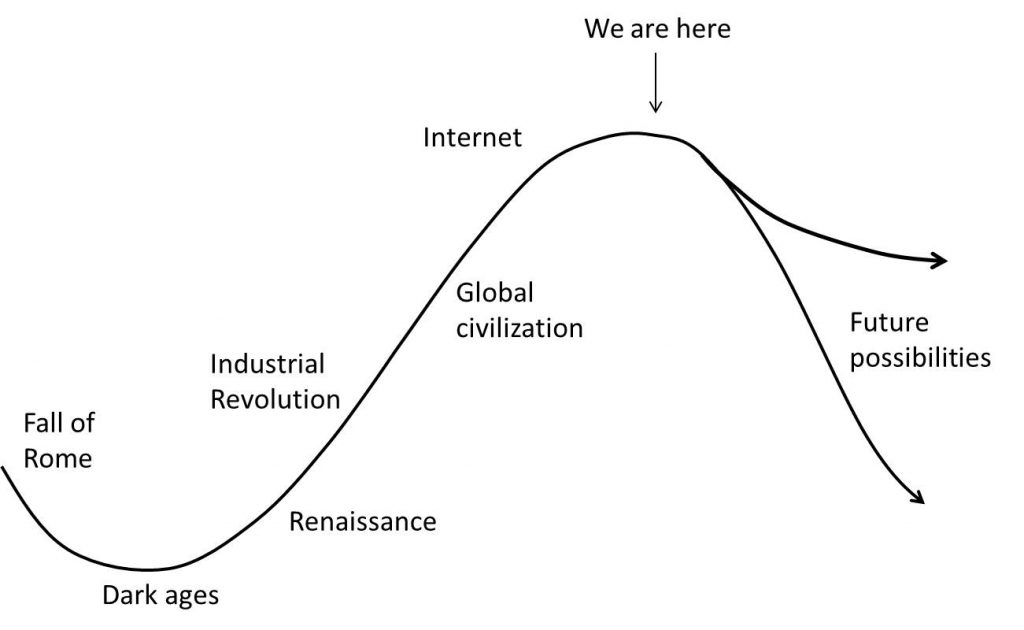
The slope of decline is, in many ways, up to us. The more we pour limited resources into prolonging progress over the short term, the steeper the downslope will be (though it will still be nothing like the fast crash that doomers imagine). On the other hand, if we can shift to a less resource- and energy-intensive lifestyle, then the slope will be more gradual. The ultimate goal – most likely beyond the lifetime of anyone now alive – is sustainability: a way of life that can be maintained indefinitely, and that neither perpetuates progress nor precipitates future declines.
Last summer, I wrote at length about growing economic inequality: the ever-rising gap in wealth between the highest and lowest classes in society. It is worth revisiting that in the context of the end of progress, because the effect has been that progress has ended at different times for different people based on their position on the socioeconomic spectrum. Standard of living (ratio of income to costs) has been declining for the working classes since around 1990, and increasingly for the middle classes as well since the recession of 2008. Meanwhile, the upper classes have maintained a solid progress trajectory.
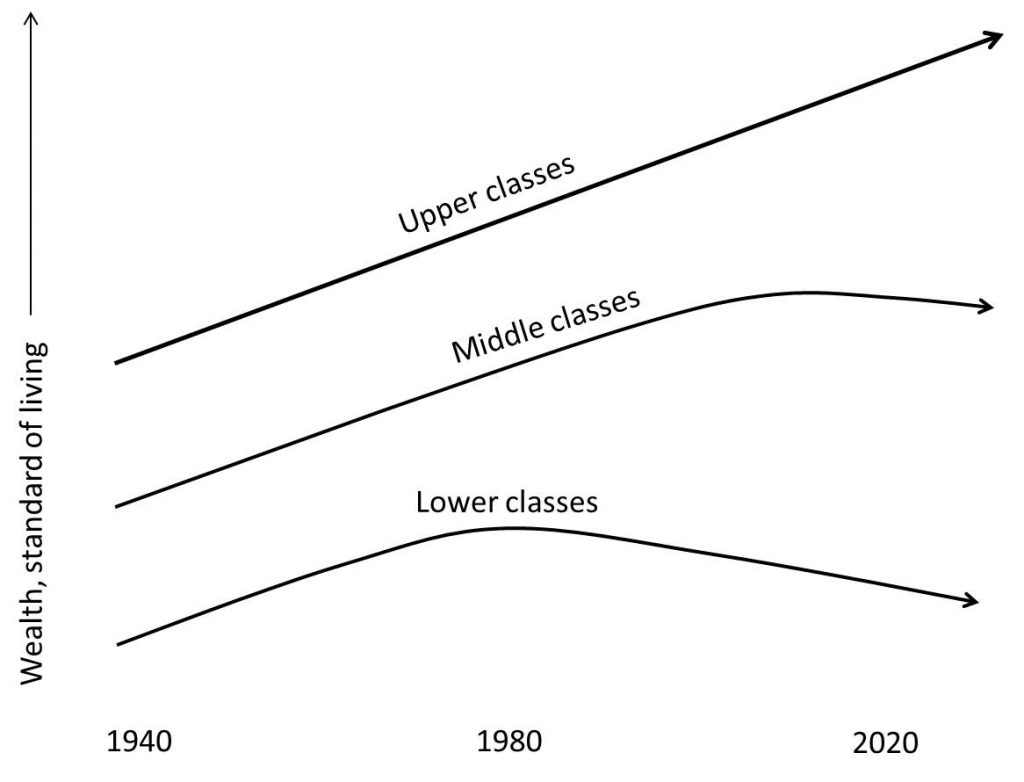
This has profound implications for where these groups are at in the process of letting go of the associated religion of Progress, which will be the focus of the next essay. It also reveals a fundamental and extremely harmful shift in the nature of the economy: as overall progress has ground toward a halt, the elites have shifted from profiting more than the lower classes to profiting directly at the expense of the lower classes. Trickle-down theory, which never worked as claimed anyway, is valid only when the entire economy is growing. Once growth stops, the wealthy can only gain through parasitism.
The nature of this shift is quite straightforward: as economic growth slows, returns on direct investment in this growth (e.g. stocks, bonds) shrink. This causes investment money to move toward real estate, land, and loan-backed securities. The “dividend” from these investments is derived not from overall growth, but rather from a direct transfer of wealth out of the pockets of the lower classes in the form of rent or interest. As investors drive up the price of land, commercial buildings, and homes, a greater proportion of farmers, businesses, and residents are locked into a lifetime of rental with no hope of ownership: their would-be profits siphoned off to maintain progress for the investment class.
As older generations were able to purchase homes and real estate at much more reasonable prices and are now cashing in on the increased value, this has increasingly become a generational wealth gap, with “successful” younger people being by and large those lucky enough to inherit wealth or property. This extraction is exacerbated in other ways, such as through pension plans that unwisely guaranteed a set annual rate of return which the market can no longer fulfill, leaving the difference to be made up by a younger generation of workers and taxpayers.
We need to change that – to ensure that progress ends for everyone including the wealthy classes and that everyone is able to reap the rewards of their labor – but first, it seems, we need to ride out the societal shockwaves associated with coming to terms with the end of progress, with the death of the god of Progress. That is proving to be a wilder ride than I expected.

2 Responses to The Shape of Our Future